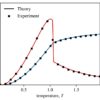From the sepia tones of a Coen brothers film set in the Dust Bowl to a child’s red coat in “Schindler’s List,” filmmakers have long known the power of color in movies. Now, computer scientists have analyzed 60 years of films to paint a picture of the past six decades in film.
Researchers at the University of Waterloo used a technique called k-means clustering to analyze the trailers for more than 29,000 North American movies released between 1960 and 2019.
“We chose to analyze trailers because they typically include many key moments from a film while also being short and accessible to the public,” said Andreea Pocol, a Ph.D. candidate in computer science at Waterloo and co-author of the study. “Trailers give us a reliable snapshot of a film, so we can extract a lot of data efficiently.”
Their technique produced both more general eight-color palettes and more detailed 15-color palettes, demonstrating the dominant colors for different data sets, which included specific films, genres and decades. They used the method to generate palettes for individual films—The Shining or The Matrix, for example—as well as groups of films, such as science fiction films or those released between certain dates.
Notably, their algorithm improved on earlier analytical methods by eliminating skin tones and the gray of asphalt in order to more accurately represent the memorable colors used in films.
The researchers found specific colors are prevalent in certain genres. As one might expect, the palette for westerns demonstrates that directors use the same muted earth tones regardless of era, while science fiction uses a lot of neon green.
“While movies in the 1960s and 1970s tended to use more saturated primary colors, the team’s analysis demonstrates modern technology has actually allowed directors to use a wider variety of colors in creative ways,” Pocol said.
The team’s ultimate goal is to use data science to help film industry executives understand trends in movie-making, including perhaps one day helping to predict a blockbuster or a flop.
“Computer science can improve the process of film production by offering tools that can help us know whether a film will succeed,” said Lesley Istead, adjunct assistant professor of computer science at Waterloo and the lead author of the study. “Part of that process is just getting a better understanding of film itself.”
The study, “The Color of Horror,” appears in the European Conference on Visual Media Production, Proceedings of the 19th ACM SIGGRAPH European Conference on Visual Media Production.
More information:
Lesley Istead et al, The Colour of Horror, European Conference on Visual Media Production (2022). DOI: 10.1145/3565516.3565523
Provided by
University of Waterloo
Citation:
Computer scientists paint a picture of six decades of movies (2023, March 9)



